TREMAYNE: From Senna vs Prost to 130R – why Suzuka is so special for F1 fans everywhere

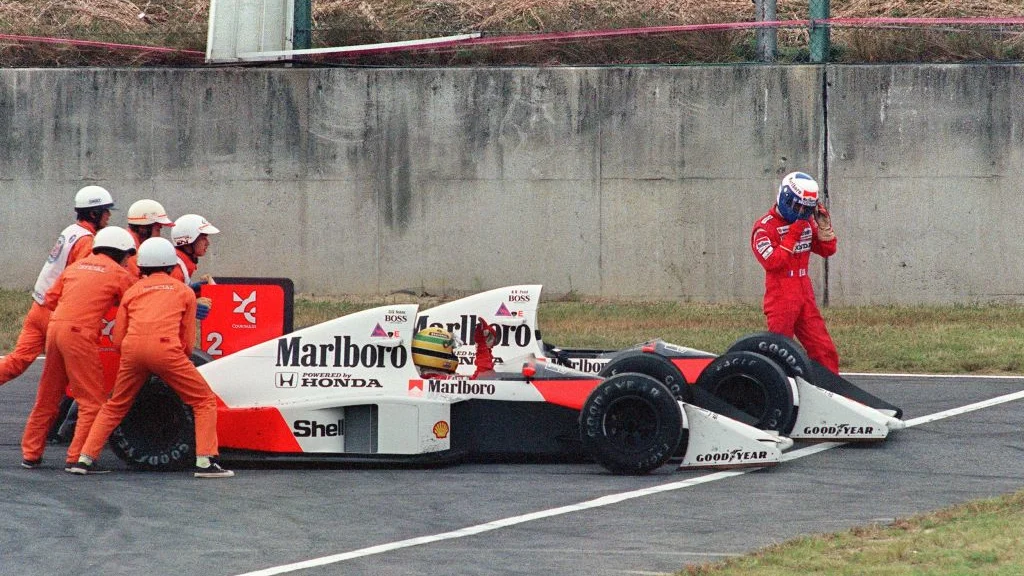
Following the news that Suzuka will remain on the Formula 1 calendar until 2029, F1 Hall of Fame journalist David Tremayne has picked out some of the reasons Suzuka is so special for racing fans everywhere.
Suzuka spoiled me forever in my first three visits. As races go, they couldn’t have been more dramatic and climactic.
READ MORE: Formula 1 to race in Japan until 2029 after new five-year extension
I’d always loved the notion of the track, even as a young fan. I liked that it was the work of the great John Hugenholtz, who was involved with the design for Zandvoort. Like Scalextric tracks, it even had a flyover section. It was Old School long before coining that expression became necessary.
There was that long, long first corner, then the series of sweeps and swerves that went up to the top of the hill and into that off-camber left-hander known as the Dunlop Curve.
That led to the two tricky Degners, named after the great racing biker and defector Ernst Degner, and thence to the hairpin.
That was followed by that long, long right-hander down to the Spoon Curve, then the climb back to maximum speed towards the once-dreaded 130R, the chicane and back on to the pit straight. Heaven knows that the track must have been like without that last slow bit…

Senna vs Prost, 1988, '89, '90
My first race there was the 1988 Grand Prix, where Ayrton Senna so nearly stalled at the start and Alain Prost seemed a shoe-in to win. Until Ayrton steadily reeled him in before overtaking on the pit straight on Lap 28 and speeding on to win his first world championship in devastating style.
Of course, the two men would figure very strongly in the coming three years.
READ MORE: Prost vs. Senna: The top 10 moments of F1's defining rivalry
I watched the 1989 race on TV in a room down the bottom of the paddock instead of the usual press room. And I could imagine the ‘huh?!’ speech bubbles over Ayrton’s head as Alain seemed to just disappear in the opening stages.
Driving like a man possessed the Frenchman blasted into the lead, leaving Senna way behind. Unknown to most at the time, and especially to Ayrton, Alain had had his mechanics remove the Gurney flap from his rear wing on the grid, and he was capitalising on that right up until the 47th of the 53 laps.
That was when Ayrton made a lunge down the inside of the Casio chicane. We all know what happened next. My feeling on why it did was that Alain was tired of always giving way to avoid an accident.
Martin Brundle said to me recently that throwing the car up the inside of someone was Ayrton’s domineering way of saying ‘move over or we collide’. Martin admitted that he had ‘to put some hurt on him’ to discourage that, and now Alain clumsily did likewise.
READ MORE: Prost vs Senna, Mansell vs Piquet and more – F1's fiercest team mate rivalries
After rejoining Ayrton drove to what seemed a thoroughly deserved victory, only for politics to intervene and take it away, handing Prost that year’s title and setting up the following year’s debacle.
There was no question that Ayrton deliberately and cynically took Alain out in 1990, and of course the F1 world exploded.
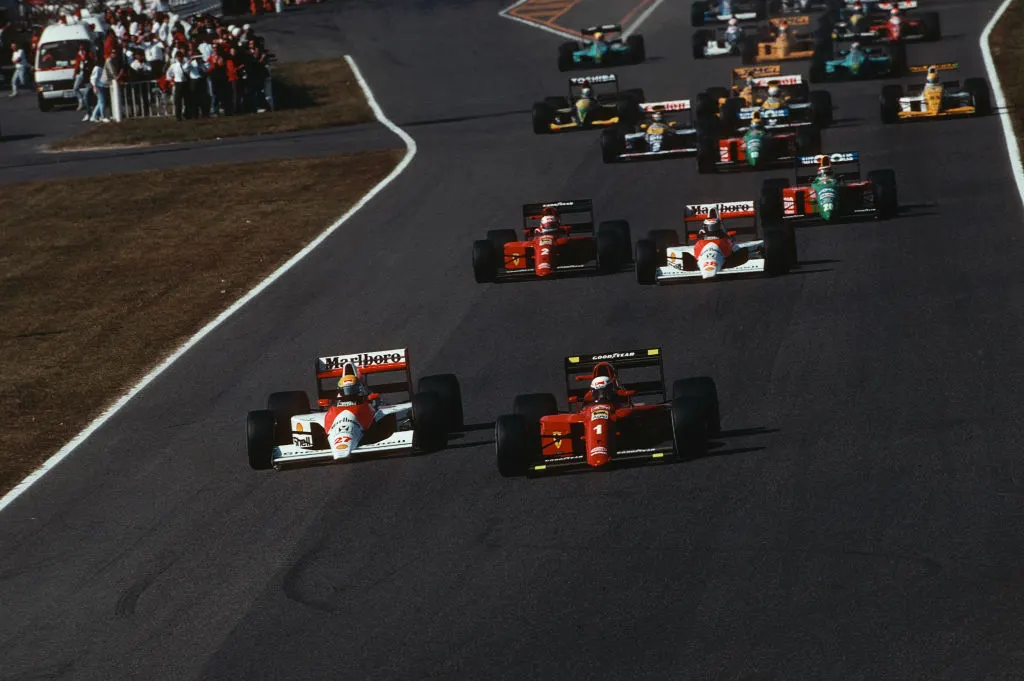
For me, a second act of the drama came in a hotel room in Adelaide two weeks’ later when a few of us sat with Ayrton and discussed many things, such as Martin Donnelly’s accident and, inevitably, Suzuka. “One who could not afford to take a chance, did so,” Ayrton said. Adding enigmatically, “As I walked back from that first corner, I left there all the pressure from last year.”
We showed him photos of his McLaren knocking off the rear wing of Prost’s Ferrari. This, remember, was a while before photos could widely be doctored.
And the outstanding thing was the passion with which he rejected them. “No! They are wrong! The wing fell off before we got to the corner!” It was, of course, nonsense, but also a fearsome indication of the depth of his passion and self-belief.
And then, after the 1991 race in which he ostentatiously handed the win to team-mate Gerhard Berger, he admitted quite freely in an expletive-ridden post-race press rant against Jean-Marie Balestre that, of course, he had taken Prost out deliberately…
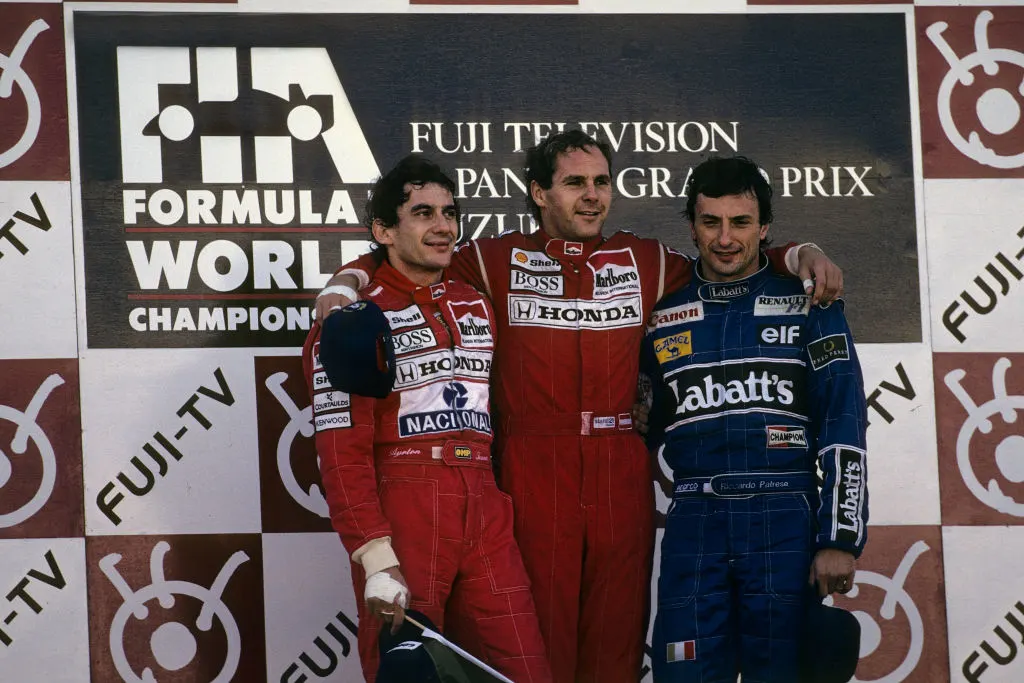
A podium for the home hero
If there was something I loved about that 1990 race, when all the dust was settled, it was a victorious Nelson Piquet sharing the podium with his boyhood friend Robert Moreno in their Benettons (making up for the win that Sandro Nannini, his own career now recently ruined by a helicopter accident, had lost 12 months earlier).
And the other brilliant smile that day, that of dear old Aguri Suzuki as he took a superb third slot – the only podium finish of his F1 career – for Larrousse at his home race.
READ MORE: 90s trailblazer Aguri Suzuki on claiming Japan’s first F1 podium
The challenge of 130R
In the old days, 130R never took prisoners. Derek Warwick once told me how he’d shunted trying to take it flat back in his first F2 outing in late 1978. Bruno Giacomelli had insisted it was, but Derek discovered that it wasn’t and wrote his Ralt off. Only later did it transpire that Bruno meant flat, but down a gear…
Later the corner claimed Mark Blundell’s McLaren in 1995, and Alain McNish’s Toyota in 2002. These were nasty old accidents that you can bet hurt, though thankfully both drivers emerged without serious injury.
Michael Schumacher had also shunted there, in 1991. He made a right mess of his Benetton, and F1 medical chief Professor Sid Watkins told him that if he carried on that way and didn’t ease back a little he’d make a beautiful corpse.
“Michael just looked completely perplexed at me,” he recalled, and incredibly he later went faster still in another B191.
READ MORE: Top 10 moments of Michael Schumacher brilliance
Damon makes history
I was stoked when Damon clinched his world championship in Suzuka in 1996. For a Harrow boy who wondered what on earth he might do or say if he bumped into Mill Hill celebrity Graham Hill, it was always going to be a powerfully emotional moment for me on a personal level when a man I very much liked and admired emulated his famous father with a title of his own.
I always thought his 1994 win, with just three new tyres and a worn one whose wheel was stuck on, was his greatest drive as he beat Schumacher in the wet. But that 1996 race was the one with all those lovely images of the home hero embracing wife Georgie, and poor old Murray Walker choking up on air. Such days are why we all love racing so much.
Mighty Mika
You didn’t often see Mika Hakkinen looking anything but cool, but in 1998 he was nervous as he prepared for the race that could make him a world champion.
“Just do what you do,” that evergreen sage Tyler Alexander counselled at McLaren. And Mika did. As Michael stalled on the grid and went to the back, the Finn won race and title, and repeated the feat in 1999 – again at Suzuka.
WATCH: How Mika Hakkinen went from humble Helsinki beginnings to become F1’s Flying Finn
Brilliance from Barrichello
All Michael Schumacher needed was eighth place to clinch his sixth title in the 2003 race, and he got it. But all race he looked uncharacteristically nervous and was completely eclipsed by team mate Rubens Barrichello, who revealed his full potential in an excellent run to the flag.
Kimi’s charge to victory
From 17th on the grid, Kimi Raikkonen drove a beautiful race in 2005 to come through and deprive Renault’s Giancarlo Fisichella of the lead at the start of the very last lap. We all loved to write how Kimi would never let one word do when none would suffice, but that day the talking he did on track was brilliantly eloquent.
Overall, I have so many memories of Suzuka: the fundamental politeness of the Japanese; how their bullet trains run on time; the trust of thousands of Japanese spectators in the '80s in particular, queueing in such orderly fashion in the Suzuka Parkland to see if they’d won the ticket lottery.
The noise of the late-night drag bikers blattering down the deserted streets of Yokkaichi; the replica US hamburger joint in Tsu City; cans of hot coffee from vending machines; explaining the word “McDonald’s” and trying to instruct a driver there; taxis with steering column gear-changes and funny rear door release mechanisms, driven at no more than 40 mph by polite gentlemen with white gloves; wasabi-flavoured KitKats…
It's a while since 357,000 fans attended the 1994 race, or 361,000 in 2006, but all is well in DT world as long as there’s a Japanese GP at Suzuka on F1’s calendar.
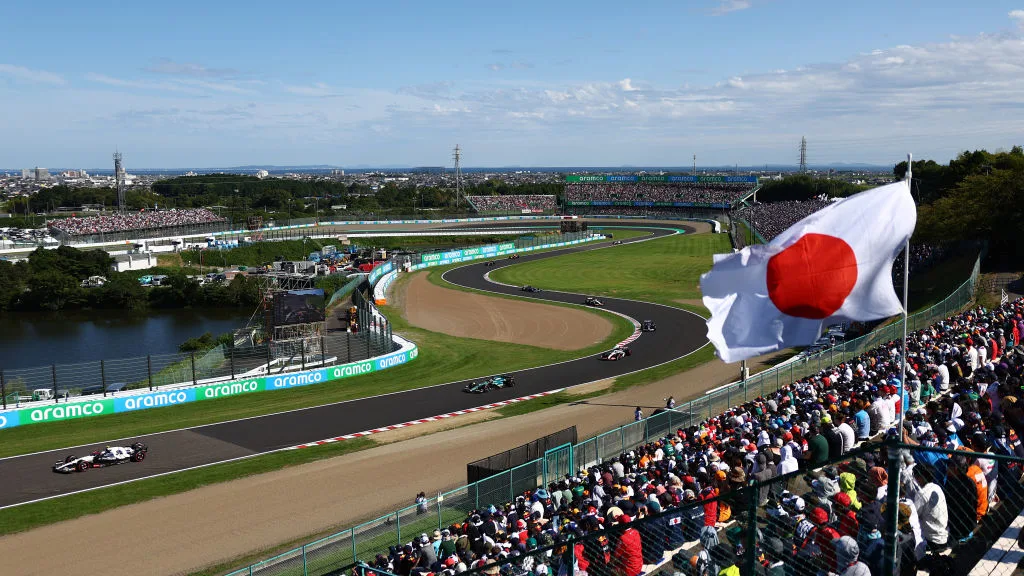
Next Up
Related Articles
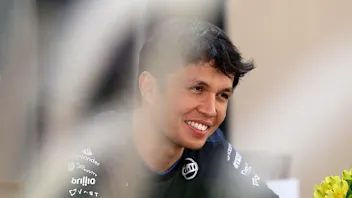 Albon names moment he's most proud of from 2025
Albon names moment he's most proud of from 2025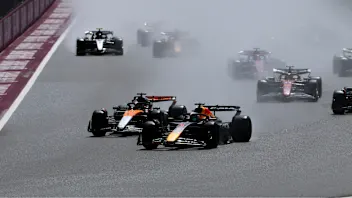 REVEALED: Your favourite race of the 2025 season
REVEALED: Your favourite race of the 2025 season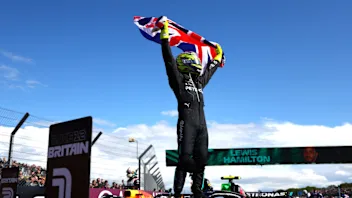 Quiz10 quiz questions on British F1 World Champions
Quiz10 quiz questions on British F1 World Champions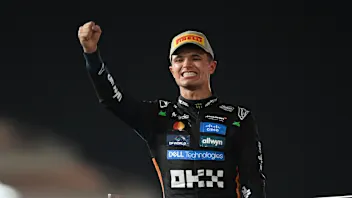 The elite group Norris joins as McLaren World Champion
The elite group Norris joins as McLaren World Champion ExclusiveWhy Gasly feels ‘ready for my time’ in F1
ExclusiveWhy Gasly feels ‘ready for my time’ in F1.webp) End Of Year Reports 2025Aston Martin’s best and worst moments from 2025
End Of Year Reports 2025Aston Martin’s best and worst moments from 2025